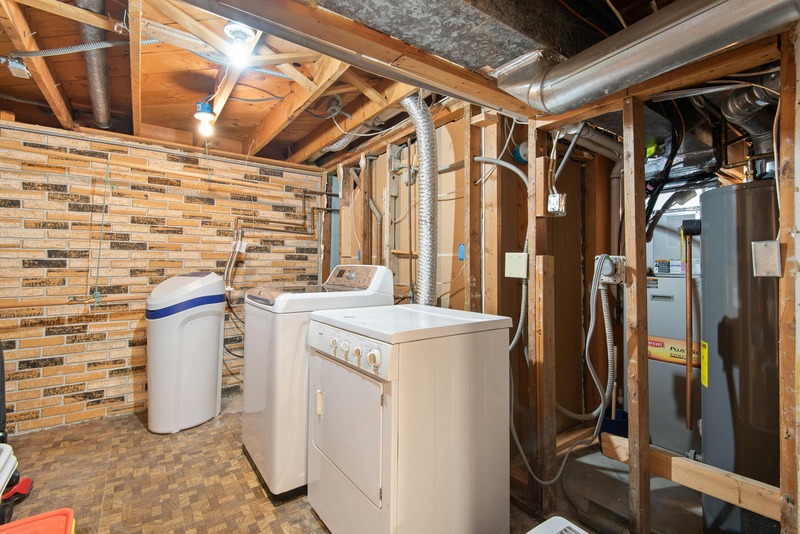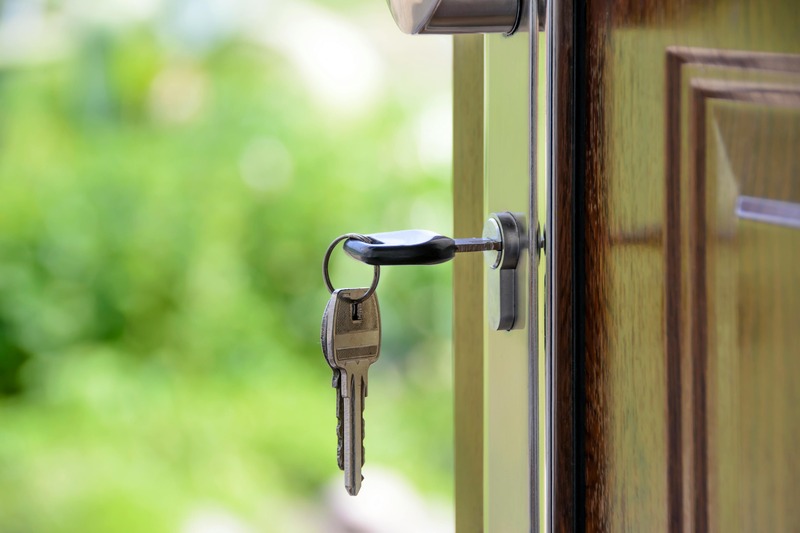
Unlock Savings With These Energy Saving Devices!
These energy saving gadgets will cut your electric bill
Are you looking for ways to save energy in your home? If so, investing in energy-saving devices is a great way to cut your electric bill.
Smart thermostats, smart lighting systems, solar panels, and other gadgets can all be used to help conserve electricity usage around your house.
Plus, with energy monitors and meters that track how much power you're using each day or month, it's easier than ever before to understand exactly where your money is going when it comes to utility bills.
Key Take Aways:
-
Smart thermostats have the best bang for your buck when it comes to lowering electricity costs.
-
Smart plugs, switches, and bulbs make it super easy and cost-effective to automate your lighting schedules. No more wasted energy on lights!
-
Solar panels allow you to gain energy independence. Depending on your location you could spend little to nothing out of pocket to go solar.
-
Energy monitors and smart meters allow you to track and identify energy-hogging appliances in your home.
-
Home automation systems like Amazon Alexa or Google Home make it easy to maximize the potential of your energy-saving gadgets.
Control Your HVAC with Smart Thermostats
Smart thermostats are a great way to save energy and money in your home. They allow you to set temperature schedules, monitor energy usage, and even control the temperature remotely from your phone or other devices.
Benefits of Smart Thermostats:
Smart thermostats can help you save on energy costs by allowing you to adjust temperatures when no one is home or when everyone is asleep. You can also set up automated schedules so that your heating and cooling system runs only when needed, saving both time and money.
Additionally, many smart thermostats come with features such as air quality monitoring which can alert you if there’s an issue with the air quality in your home.
Types of Smart Thermostats:
There are many types of smart thermostats available today, ranging from basic models to more advanced ones with additional features like voice control or integration with other smart devices in your home.
Some popular brands include Nest, Ecobee, Honeywell Lyric, Emerson Sensi Wi-Fi Thermostat, and more.
The cost for a smart thermostat will vary depending on the type of model chosen but they can be relatively inexpensive compared to traditional non-smart models.
Installation costs may also vary depending on whether it is being installed professionally or not, but some manufacturers offer free installation services for their products, making them even more affordable options for homeowners looking to upgrade their existing systems without breaking the bank.
Smart thermostats are an easy and cost-effective way to save energy and money. They can help you stay comfortable while saving energy, but there are other smart solutions available too. Let's take a look at the benefits of smart lighting solutions next.
Automate Your Lighting
Smart lighting is an energy-efficient way to create a comfortable atmosphere in your home. Smart lighting systems allow you to control lights remotely from your phone or other devices, as well as set schedules for when lights should turn on and off.
There are a few ways you can manage your lighting. Smart bulbs, switches, and plugs allow you to schedule lights to turn on and off.
Better yet many smart home systems Amazon Alexa or Google Home will turn off lights when it notices you aren't home.
Benefits of Smart Lighting:
Smart lighting offers numerous benefits, including the ability to reduce energy costs by automatically turning off lights when not in use and providing convenient remote access for controlling the lights from anywhere.
Additionally, some systems offer voice control capabilities so that you can easily adjust the brightness or color of your lights without having to get up or even be in the same room.
Types of Smart Lighting Solutions:
The type of system you choose will depend on what features you need and how much money you’re willing to spend. Basic models typically include dimmers and timers that allow you to schedule when certain lights should turn on and off at specific times throughout the day.
More advanced systems may also feature motion sensors that detect movement within a certain area and respond accordingly by turning on or off certain light fixtures based on occupancy levels detected in those areas.
Some high-end models even come with built-in speakers so that they can play music while adjusting light settings according to different moods or activities taking place in each room.
Installing and setup of smart bulbs and plugs is usually pretty easy. If you can change a light bulb you can install a smart bulb.
Smart switches are a little bit more complicated. If you aren't familiar with changing light switches or have a basic understanding of electrical components you may want to hire a professional.
However, once installed properly these systems provide great value over time through their efficient operation which results in lower electricity bills compared to traditional non-smart bulbs/fixtures being used instead.
Smart lighting is an energy-efficient solution that can help reduce electricity bills and provide additional convenience.
Solar Panels
Solar panels can be a great way to reduce your electricity bills. However, the installation costs and performance will be heavily dictated by your location.
Solar panels come in various sizes and types, so it’s important to do research before making a purchase decision.
Benefits of Solar Panels:
Installing solar panels can save you money on your monthly electricity bill as well as provide environmental benefits such as reducing carbon emissions. Additionally, solar panel systems have no moving parts which make them very reliable and low maintenance over time.
Types of Solar Panels:
There are two main types of solar panel systems available - photovoltaic (PV) and thermal (T). PV systems convert sunlight into direct current (DC) electricity that is then converted into alternating current (AC) for use in homes or businesses.
Thermal systems use heat from the sun to warm water or air for heating purposes. Both types of systems can be used together for maximum efficiency.
The cost of installing a solar panel system depends on several factors including size, type, location, and installation complexity. Generally speaking, PV systems tend to be more expensive than thermal ones due to their higher efficiency rates but both require professional installation services which can add additional costs depending on the complexity of the job.
Additionally, some states offer incentives such as tax credits or rebates that can help offset the cost of purchasing and installing a solar panel system so it is worth researching what options may be available in your area before making any decisions about going solar.
Solar panels are a great way to save money on electricity costs and reduce your carbon footprint. With the right type of system, you can see a significant return on investment in just a few years.
Now let's look at energy monitors/meters for another way to save energy and money.
Energy Monitors & Meters
Energy monitors and meters are an effective way to track your energy usage in real-time. They provide you with valuable insights into how much electricity you use each day or month and can help you make informed decisions about reducing your energy consumption.
Benefits of Energy Monitors/Meters:
With an energy monitor/meter, you can easily identify which appliances or circuits are using the most electricity and adjust their settings accordingly. This allows for more efficient use of power and can result in significant savings on your monthly electric bill.
Additionally, many monitors come with additional features such as remote access, so that you can check your usage from anywhere at any time via a smartphone app or web portal.
Types of Energy Monitors/Meters:
There are several types of energy monitors available on the market today ranging from basic models that measure overall electricity usage to more advanced ones that measure individual appliances or circuits within your home or business premises. Some models also include additional features such as temperature sensors, allowing users to control their heating and cooling systems remotely for even greater efficiency gains.
Costs vary greatly for energy monitors and meters. Some systems completely replace your home's breaker box while others just connect to your current electrical system.
Sense is a popular DIY-friendly brand that retails for about $300. If you aren't handy you may also need to consider installation costs.
Span is a more advanced system that costs about $5,500. Installation costs aren't cheap either. You can expect an electrician to charge several thousand dollars for an installation.
However, these costs should be weighed against potential long-term savings when considering whether to invest in one of these devices for monitoring purposes only.
In addition, some states may offer rebates for installing certain types of monitors so it is worth researching this before making a purchase decision too.
Energy monitors can help you save money on your energy bills by providing real-time data about your energy usage.
Now let's look at the benefits of home automation systems and how they can help you further reduce your energy costs.
Home Automation Systems
Home automation systems are becoming increasingly popular among homeowners and small business owners. These systems allow users to control their home’s lighting, temperature, security system, and other appliances from a single device or app.
Some popular brands include Amazon Alexa, Google Home, and Apple HomeKit.
Home automation systems offer numerous benefits that make them worth considering for anyone looking to improve the convenience of their living space.
These systems connect to your existing devices to create powerful automations.
For example, you can make sure all your lights off when you leave the house or go to bed.
Or even automatically turn the AC off when you leave the house.
Most are free but some have paid features or premium subscriptions. Test a few out and see which one works best for you.
Remember Before You Buy
Simply purchasing a smart plug, smart thermostat, or other smart home devices doesn't guarantee you will save money on energy bills.
But, they will help identify where you are using the most energy and simplify cutting usage with automation. It will take some trial and error and time to perfect.
Written by Thad Warren
Thad is a native Texan who has worked in the energy industry for just over 5 years.
Connect
Recent Posts
What is considered a utility bill? Your Guide to Essential Services
Utilities help to keep your daily life comfortable and your home operable. So, what is considered a utility bill? And, what is the average cost of your monthly utility bill? In this guide we’ll break down what types of essential services make up your utility bills, how to read your bill, and strategies for reducing different utility bills.
March 2025

4 minutes

Creating Your Home Buying Budget: How much house can you afford?
Before you begin the home buying process, it’s important to take the time to understand how to budget to buy a home. In the time leading up to closing you’ll need to make smart financial decisions and save strategically for your home buying budget.
March 2025

6 minutes

Why You Need to Create a Budget: Everything You Need To Establish a Home Budget
Struggling to manage your finances? Learn how creating a household budget can help you take control of your money, reduce stress, pay off debt, and save for the future.
March 2025

6 min



